Serve as the surface on which you grow your kelp
Back to: Gear Selection
On an ocean farm, lines are used to:
-
-
Connect the different components of your array
-
Anchor the system
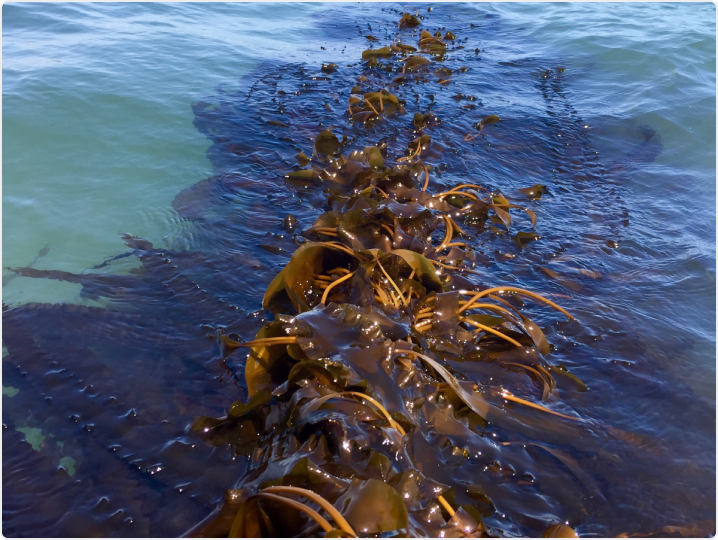
You’ll likely need different types of line for these different applications.
Important Note
The most important factor to consider when choosing a line is its density. The density will determine if the line floats, sinks, or remains neutrally buoyant in the water. Density is determined by the type of material that the line is made of.
Type of Lines
Floating Lines
- Polypropylene
Sinking Lines
- Nylon
- Polyester
- Natural fibers
Neutrally Buoyant Lines
- Blends of polyester and polypropylene (e.g. Hydropro)
Density is important because you want your lines to stay below the surface of the water.
Seedstring can become damaged if your growlines float to the surface, and having lines close to the surface also pose a greater risk of entanglement with marine mammals and passing boats. You can help control these risks by using sinking or neutrally buoyant lines. In general, any line that sits within the first few meters below the waterline should be sinking or neutrally buoyant. This includes your growlines, growline buoy connection lines, and any lines used in the buoy and bridal system of the 5-line array.
You may want to use a floating line for the portion of your anchor line closest to the seafloor. This could help to hold the anchor line slightly off the bottom and keep it from becoming tangled with the anchor. When in doubt, opt for sinking or neutrally buoyant lines.
Whatever you do, you should not use lead line for seaweed cultivation! Kelp takes up heavy metals as it grows, and the leaded core of the line could potentially contaminate your crop. Similarly, we recommend avoiding any line that contains an anti-fouling treatment, as it may inhibit the kelp’s growth. Some researchers are experimenting with natural fiber lines like hemp and manila, which show promise for the industry to eliminate plastic-based lines altogether.
The second factor to consider when choosing a line is its diameter.
In terms of diameter, for growlines ⅜-inch to ½-inch should work well in most cases. ⅜-inch is quite a bit cheaper, but ½-inch has a bit more surface area for the kelp to settle on and attach. We compared these side-by-side to see if there was a significant difference in biomass and yield to outweigh the difference in cost, and our observations suggested growth yields are significantly increased on the ½-inch diameter line. You’ll likely want a thicker, more substantial line for your anchors.
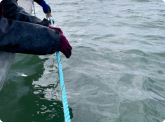
⅜” – ½” in diameter
Hydropro or any Nylon, Polyester, or Polyester/polypropylene Blend
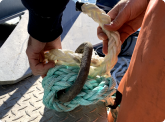
½” or greater for single-line array; 5/8” or greater for
5-line array
Polypropylene or nylon
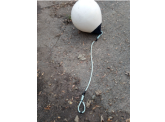
Buoy Lines and Pigtails
⅜” or greater in diameter
Hydropro or any Nylon, Polyester, or Polyester/polypropylene Blend
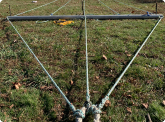
5-Line Array Bridal
1/2” or greater in diameter
Hydropro or any Nylon, Polyester, or Polyester/polypropylene Blend
GreenWave Tip
On the GreenWave farm, we’ve used Esterpro (a sinking line) and Hydropro (neutrally buoyant) for our growlines. We’ve also taken old lines used on our oyster cages and repurposed it for growing kelp. Sometimes the line that shows a little wear will create a nice fuzzy surface for juvenile kelp to attach.